History Request a Quote for Actinium-225

Discovered in 1947 by a team at Argonne National Laboratory and an independent Canadian research team, actinium-225 (Ac-225) undergoes alpha decay to francium-221 with a half-life of 10 days. For this reason, the isotope is being evaluated as an ideal candidate for use in medical applications. Alpha-emitting isotopes show great promise for cancer treatment because of their short path length and high energy transfer of radiation. Typically, the range is only that of a few cell diameters, making these isotopes highly effective at destroying cancer cells and leaving healthy cells untouched. Many radiolabeled products that incorporate Ac-225 are currently being used in numerous clinical trials for the treatment of cancers including prostate cancer, myeloid leukemia, and breast cancer.
The U.S. Department of Energy Isotope Program (DOE IP) identified Ac-225 as a critical isotope because of its high demand and limited availability. Over the last 10+ years, the DOE IP has provided funding and facilities to aid in the research and development of new methods for creating the isotope. Also of considerable interest in the medical community is the daughter isotope of Ac-225, bismuth-213 (Bi-213), which has applications as the radioactive component in cancer treatment options for leukemia, lymphomas, and micrometastatic carcinomas.
Production Methods for Ac-225
Presently, the primary source of Ac-225 comes from thorium-229 (Th-229) decay. Stores of Th-229 were considered a waste product, leftover from nuclear programs in the 1940s and 1950s. For many years, Th-229 was stored in a secure facility—until the discovery that Ac-225 and its decay daughter, Bi-213 were of great medical interest. Scientists at Oak Ridge National Laboratory (ORNL) began "milking" the stores of Th-229—a process that involves separating Ac-225 from the other isotopes that decay from thorium. The process is repeated every month, with each batch yielding millicurie quantities of Ac-225.
The demand for Ac-225 is growing daily with researchers, physicians, and patients around the world waiting for shipments of the radionuclide, which is then radiolabeled to yield individual patient doses. To address global demand and assist in providing this rare and critical isotope, the DOE IP organized facility usage and funding to research multiple routes for producing Ac-225. One of these methods, accelerator-produced actinium-225, is being investigated by three national laboratories and was coined the Ac-225 Tri-Lab Effort.
Ac-225 Tri-Lab Effort
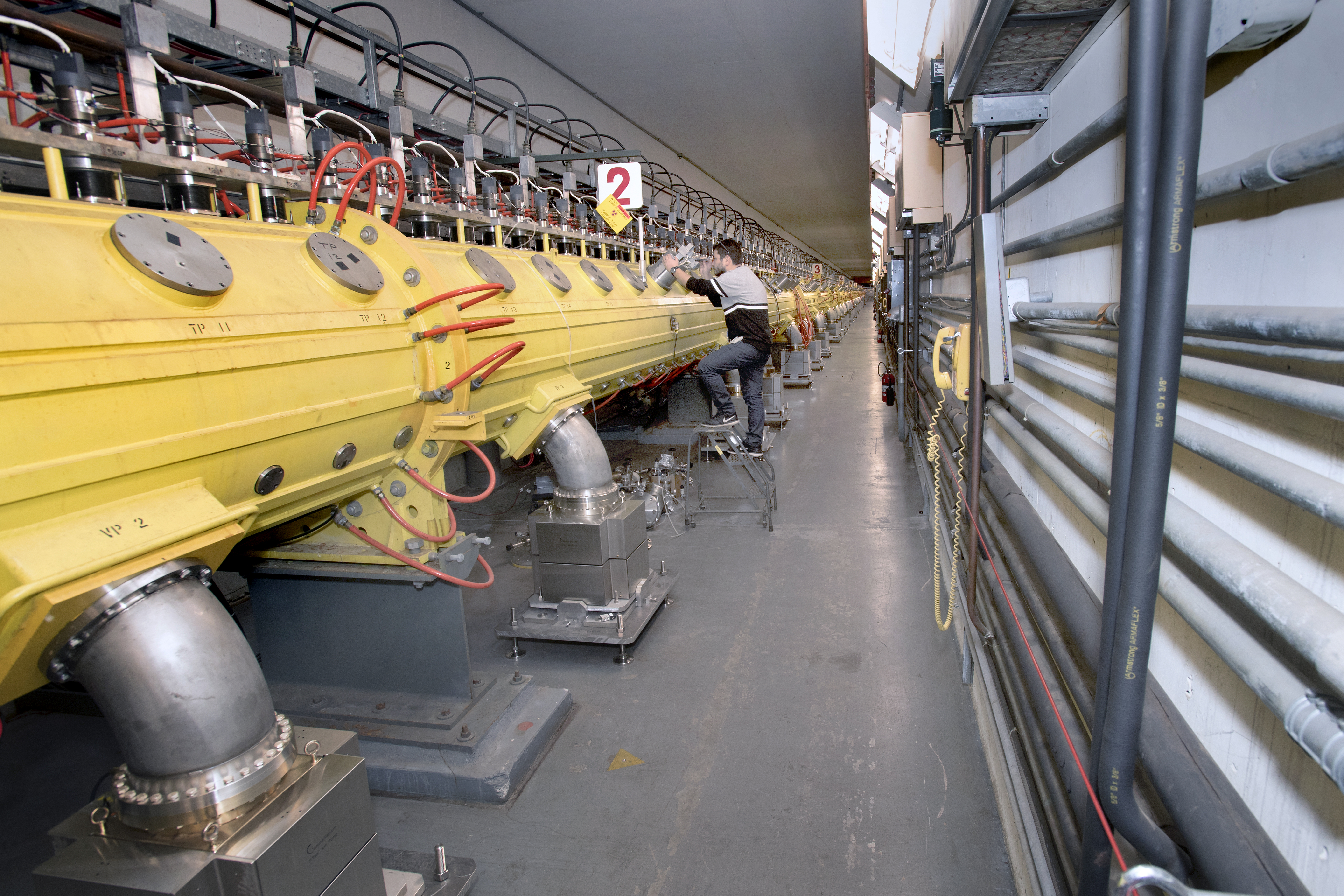
The Ac-225 Tri-Lab Effort was established in 2015 by the DOE IP and researchers at Brookhaven, Los Alamos, and Oak Ridge National Laboratories to research and develop new production routes for Ac-225. Using accelerator beam facilities at Brookhaven and Los Alamos, thorium-232 targets are fabricated at the labs and placed into an accelerator. Historically, chemical processing has occurred at ORNL exclusively; however, in 2023, Brookhaven established chemical processing capabilities. Now the two sites alternate production campaigns, and the purified product is dispensed and shipped to customers. The goal of the Ac-225 Tri-Lab Effort is to leverage DOE IP facilities, capabilities, and expertise to fill the void in supply for the medical and research Ac-225 markets.
Since its formation, the Tri-Lab Effort has distributed more than 1102 millicuries of accelerator-produced Ac-225 to evaluators. In 2019, the group announced routine production and product availability for purchase by end-users. Plans for the effort include producing greater quantities of the isotope—from the current 50–100 mCi per batch to 100–1,000 mCi per batch over the next 4 years. Renovations to existing processing facilities at Brookhaven National Laboratory and construction of a new building at Los Alamos National Laboratory are underway, allowing the DOE IP and Tri-Lab Effort to accomplish these goals.
Tri-Lab effort makes strides toward increasing supply of Ac-225
FDA accepts Drug Master File for actinium-225 nitrate (accelerator-produced)
In January 2020, the U.S. Food and Drug Administration (FDA) accepted a Type II Drug Master File (DMF) submission for actinium-225 nitrate (accelerator-produced) submitted by ORNL.
Visit our Ac-225 DMF Announcement
FDA accepted Drug Master File for actinium-225 nitrate (thorium-229 decay product)
In January 2021, the FDA accepted a Type II DMF submission for actinium-225 nitrate (thorium-229 decay product) submitted by ORNL.
Visit our Ac-225 (Th-229 derived) DMF Announcement
A milestone for the Tri-Lab Effort, a DMF is a confidential, detailed document submitted to the FDA with information about facilities, processes, or articles used in the manufacturing, processing, packaging and storing of human drug products. An active DMF enables clinical investigators and pharmaceutical companies to reference the filing in their regulatory submissions.
Click Here to Request a Quote for Actinium-225
For more information on Ac-225 and the Tri-Lab Effort, click the links below.
FDA-NRC Workshop: Targeted Alpha Emitting Radiopharmaceuticals, with Focus on actinium-225
Held on Wednesday, September 22, 2021, the FDA and NRC discussions included: Targeted Alpha Emitters with Focus on Actinium-225 Radiotherapies; Novel Radiopharmaceuticals: Standards Development, Product Quality, Supply and Demand; Clinical Considerations for Development of Novel Radiopharmaceuticals; User and Industry Perspectives.
DOE Isotope Program virtual roundtable with NRC on accelerator-produced actinium-225
On Tuesday, March 21, 2023, the DOE IP held a Virtual Roundtable on Accelerator-Produced Ac-225 with the Nuclear Regulatory Commission (NRC). As the DOE IP is increasing routine supply of Ac-225, one production method is irradiation of thorium with high energy protons to produce Ac-225 through spallation which has the ability to produce significant quantities of Ac-225. This method co-produces Ac-227 that is ≤ 2% of total activity at time of product release. Users of this Ac-225 product are reporting tremendous labeling and research successes. The growing community of customers have questions regarding the regulatory landscape for using this material in their research. In response, the DOE IP hosted a virtual roundtable where the DOE IP and the NRC presented information related to accelerator-produced Ac-225 followed by a Q&A.
Watch the meeting and view presentations
2020 Ac-225 User Meeting Recording

Watch the Actinium-225 User Meeting Video
2020 Ac-225 User Meeting Presentations
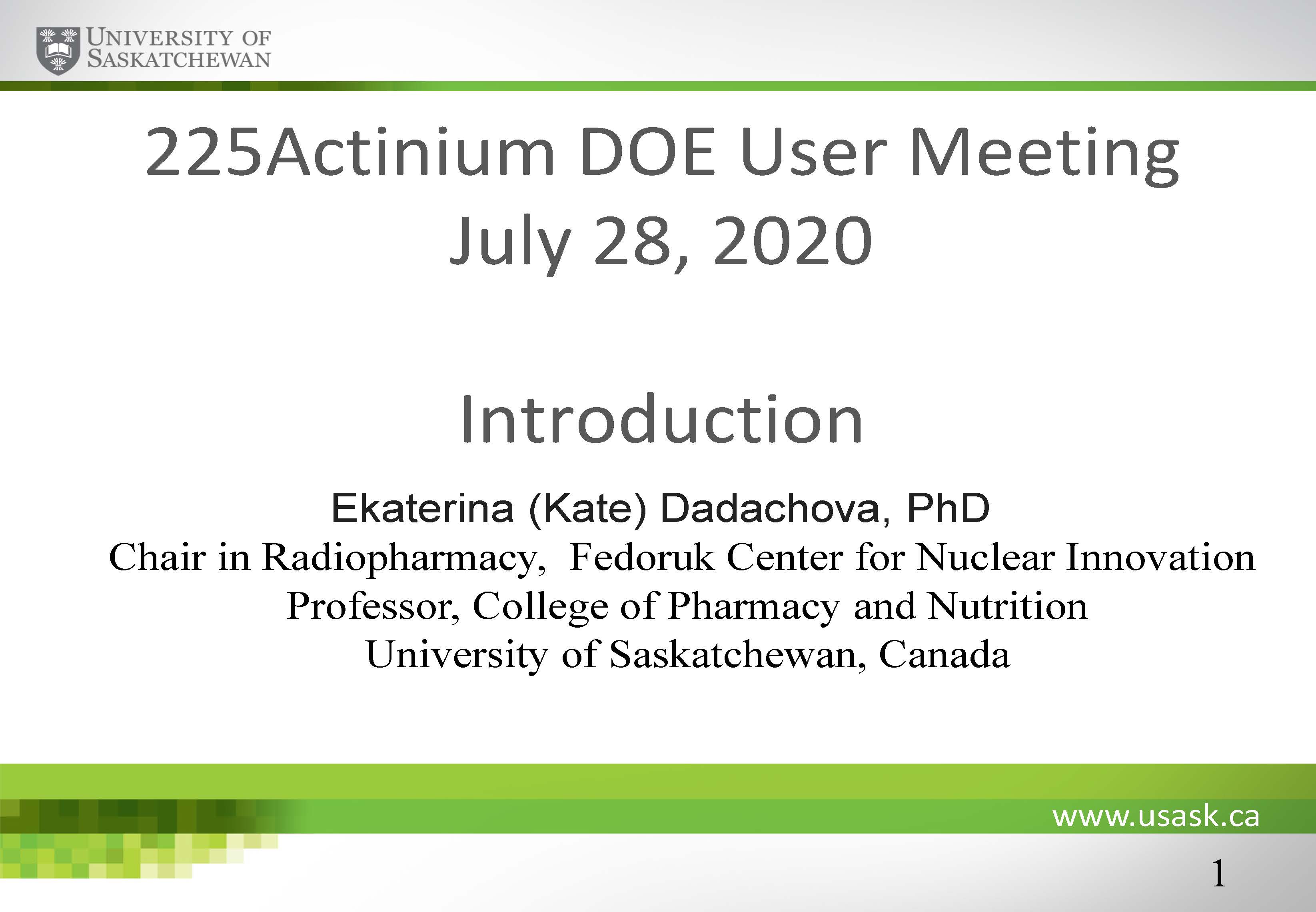
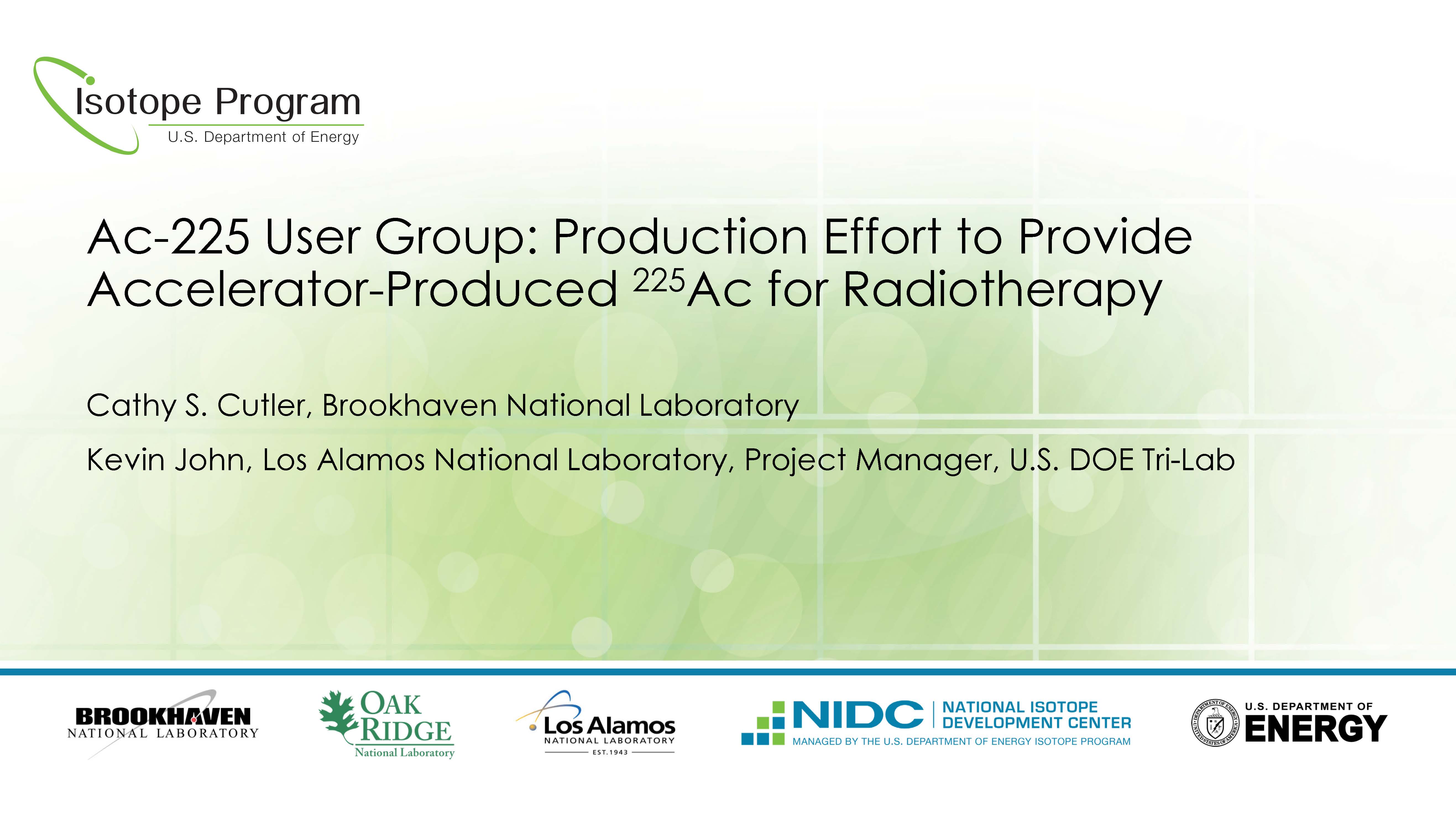
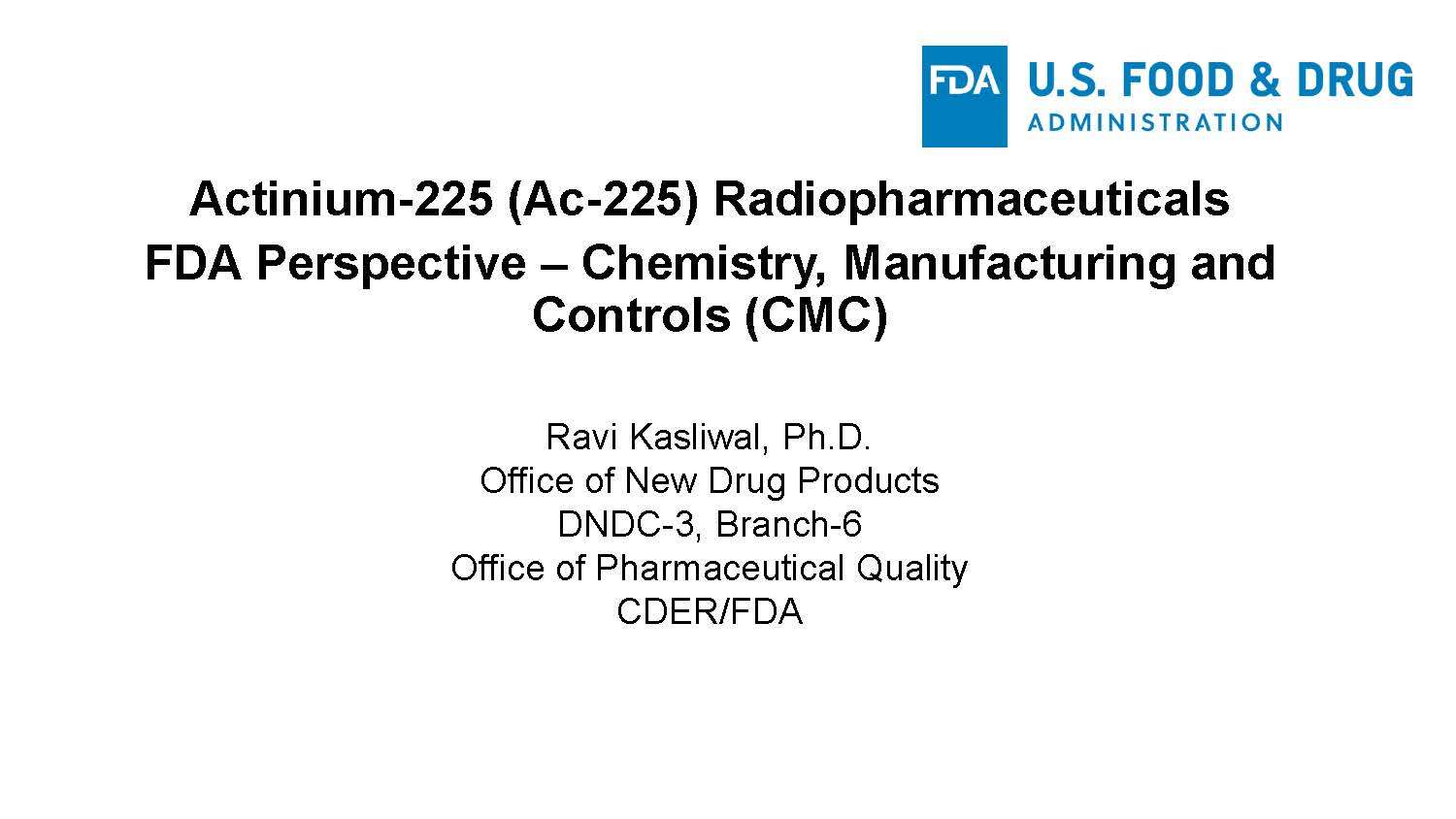
Manufacturing, and Controls
by Dr. Ravindra Kasliwal, U.S. FDA
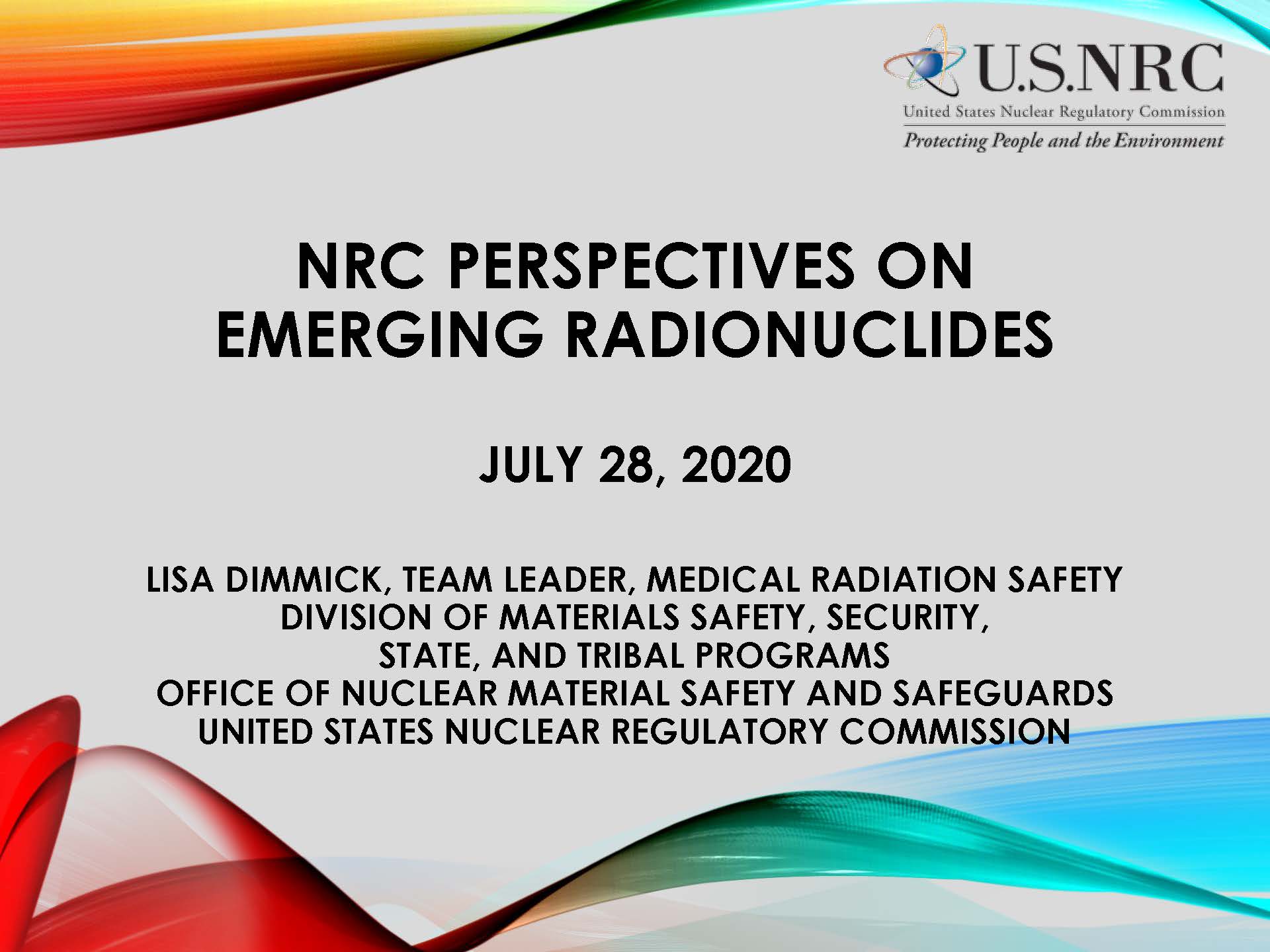



Brochures
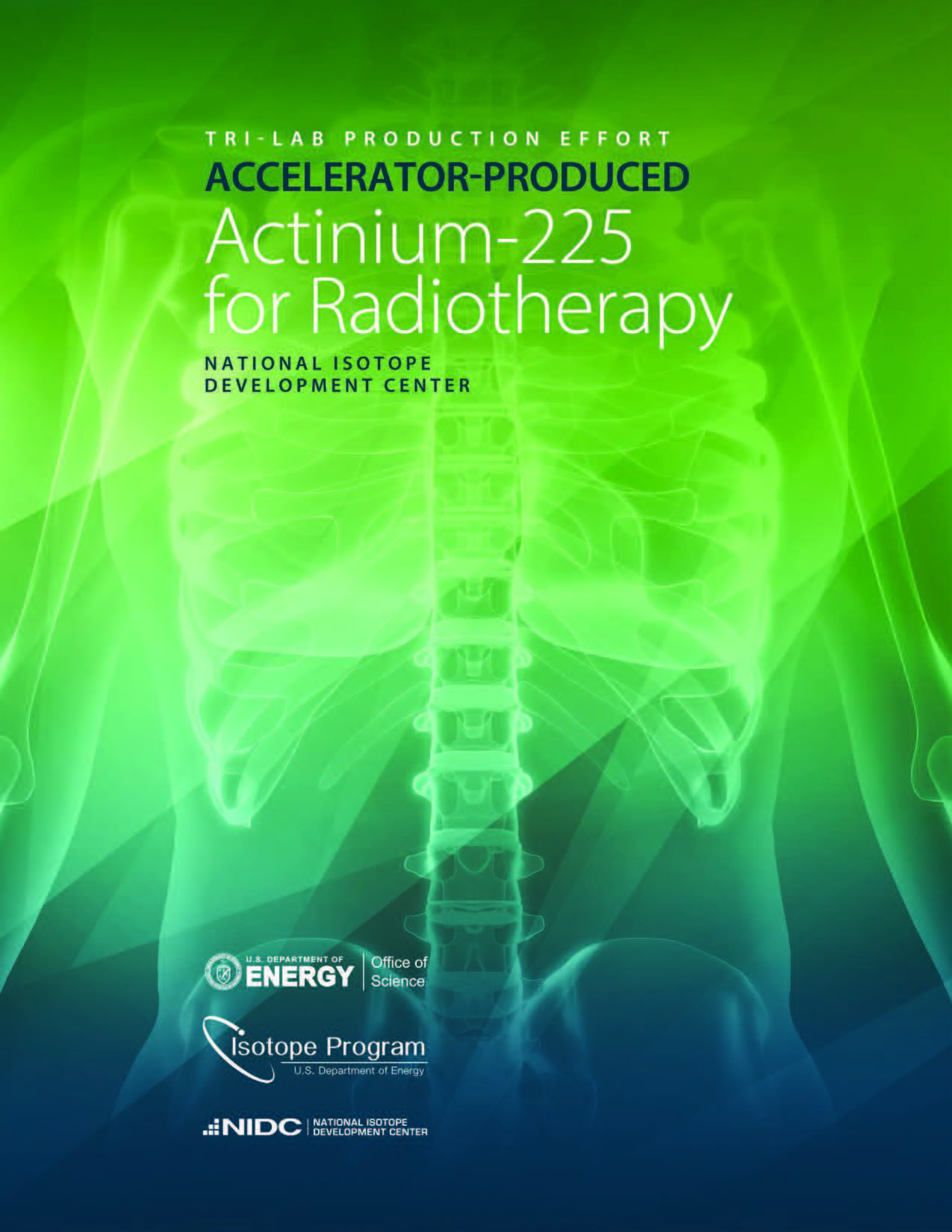 |
Patents
Posters
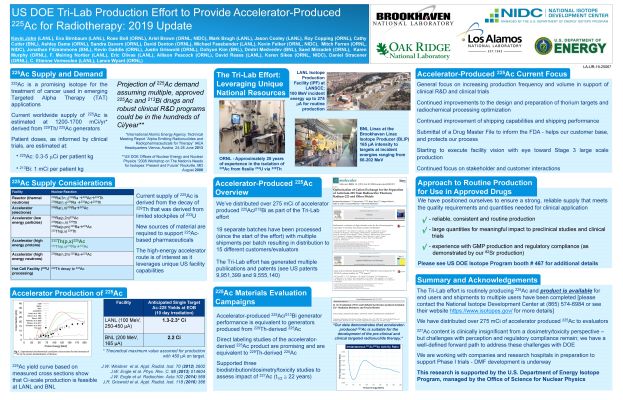
| 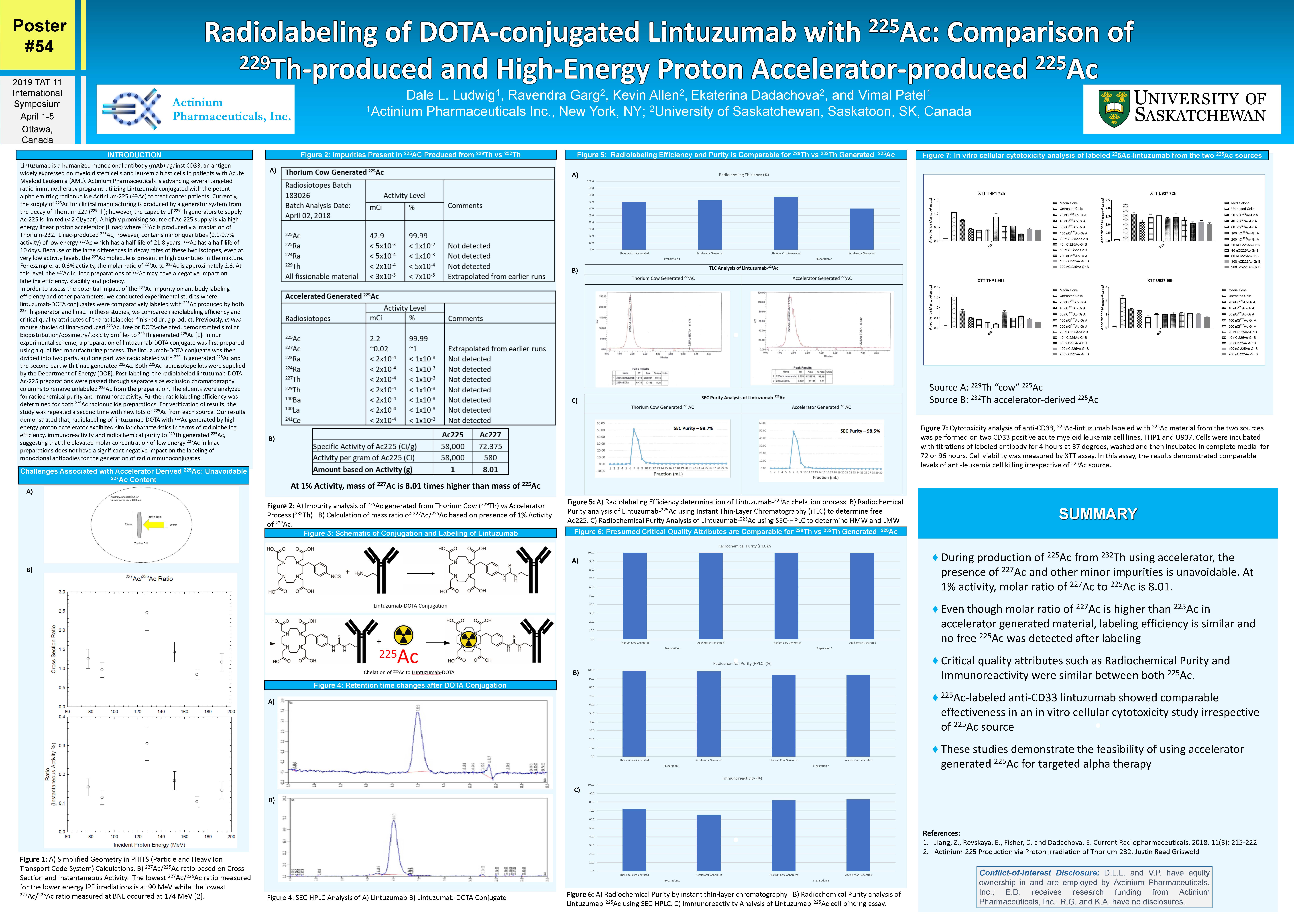
|
Publications – Ac-225 Dosimetry
Publications – Production of Ac-225
Actinium-225 in Catalog Request a Quote for Actinium-225 Contact for More Information Subscribe for Updates


















